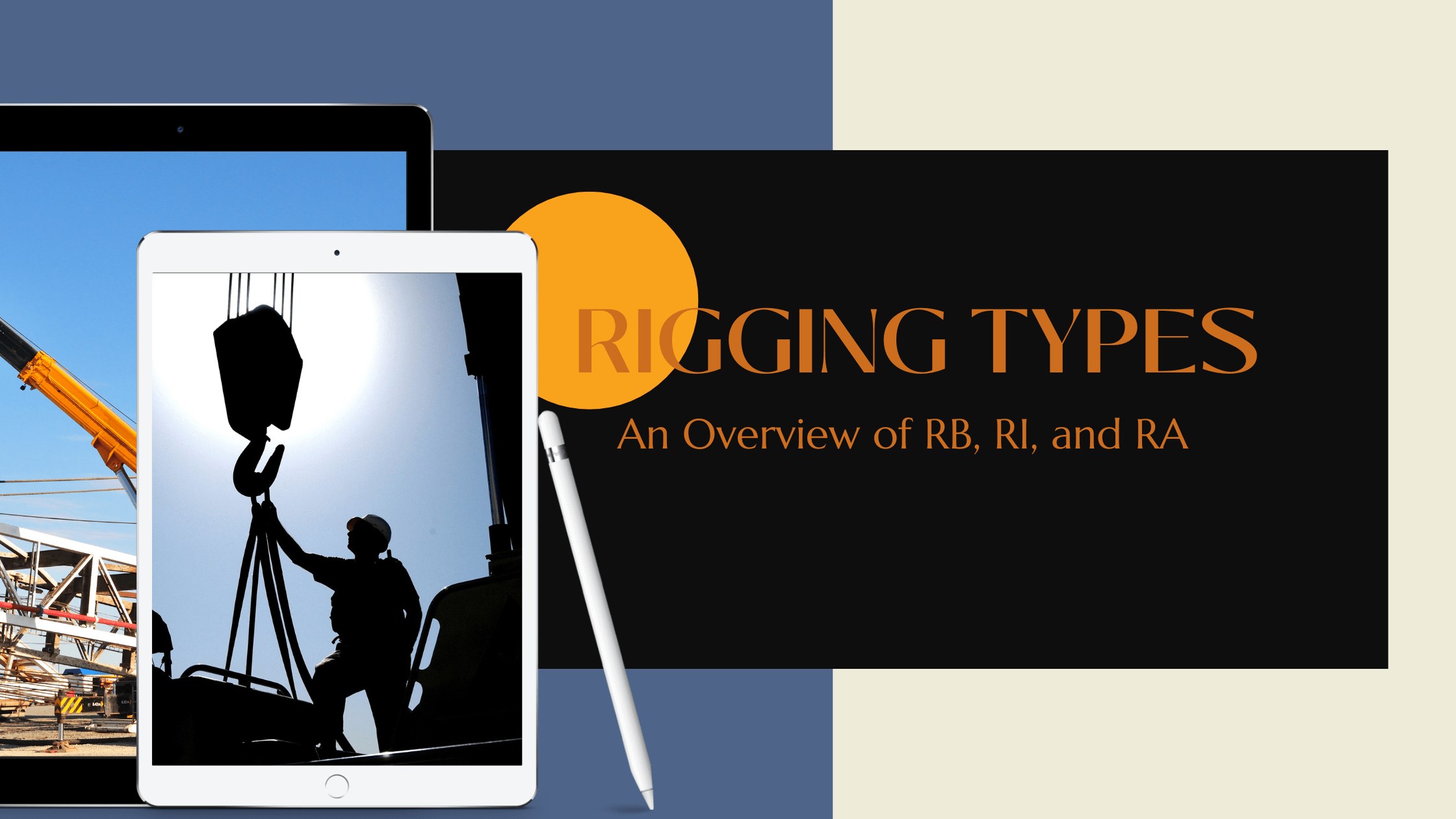Navigating the Levels: An Overview of Rigging Types: RB, RI, and RA
Rigging is a crucial aspect of construction, engineering, and other industries, involving the safe and efficient movement of loads using specialised equipment and techniques. In Australia, the level of expertise and experience required for different rigging tasks is defined by three licensing classes: RB (Basic Rigging), RI (Intermediate Rigging), and RA (Advanced Rigging).
Understanding the differences between these three classes is essential for anyone considering a career in rigging, as it determines the types of jobs you can legally undertake.
Basic Rigging (RB): The Stepping Stone
The RB license is the entry point for aspiring riggers. It covers the fundamental skills and knowledge needed to perform basic rigging tasks under supervision. This includes:
- Dogging: Assisting a rigger by guiding loads, attaching and removing slings, and operating simple lifting equipment.
- Structural steel erection: Assembling and securing steel components using bolts, rivets, and other means.
- Particular hoists: Operating specific types of hoists, such as winch hoists and chain hoists, for lifting and lowering loads.
- Placement of pre-cast concrete members of a structure: Safely positioning and securing pre-cast concrete components in construction projects.
- Safety nets and static lines: Installing and maintaining safety nets and static lines for fall protection.
- Mast climbers: Operating and maintaining mast climbers, which are temporary platforms used for construction, maintenance, and inspection work.
- Perimeter safety screens and shutters: Installing and dismantling temporary safety screens and shutters around construction sites.
- Cantilevered crane loading platforms: Assisting with the loading and unloading of cranes using cantilevered platforms.
To obtain an RB license, individuals must complete a nationally recognised training course and pass a competency assessment. The course typically covers topics such as:
- Rigging principles and safety procedures
- Lifting equipment and sling selection
- Load calculations and stability
- Knot tying and splicing
- Communication and hand signals
- Fall protection and rescue techniques
Intermediate Rigging (RI): Expanding Your Horizons
The RI license signifies a higher level of expertise and allows individuals to perform a broader range of rigging tasks with more autonomy. This includes:
- All the tasks covered by the RB license
- Rigging work involving cranes, conveyors, dredges, and excavators
- Tilt-slab installations
- Rigging for scaffolding and formwork
- Planning and supervising rigging operations
- Rigging for offshore construction and maintenance
- Rigging for wind farm installations
To be eligible for an RI license, individuals must hold an RB license and complete additional training and assessment covering more complex rigging techniques and equipment. This typically includes:
- Rigging for specific types of equipment
- Planning and supervising rigging operations
- Advanced load calculations and stability analysis
- Working at heights and rescue from heights
- Rigging in confined spaces
Advanced Rigging (RA): Mastering the Craft
The RA license represents the highest level of expertise in rigging and allows individuals to undertake complex and specialised rigging tasks. This includes:
- All the tasks covered by the RB and RI licenses
- Rigging for heavy lifts and critical lifts
- Rigging for demolition and dismantling
- Rigging for specialised construction projects, such as bridges and tunnels
- Rigging for offshore oil and gas platforms
- Rigging in confined spaces
- Working at heights and rescue from heights
To obtain an RA license, individuals must hold an RI license and complete additional training and assessment covering highly specialised rigging techniques and equipment. This typically includes:
- Rigging for critical and heavy lifts
- Design and engineering of rigging systems
- Advanced planning and risk assessment
- Working with specialised rigging equipment
- Supervision of complex rigging operations
Choosing the Right Level for You
The appropriate rigging license level for you depends on your career aspirations and experience. Here are some factors to consider:
- Your desired career path: If you are new to the industry, starting with an RB license and progressing to RI and RA as you gain experience is the best approach. If you have experience in a related field, such as construction or engineering, you may be eligible for a higher-level license.
- The types of projects you want to work on: Different projects require different levels of expertise. If you want to work on large or complex projects, you will need an RI or RA license.
- Your learning style and goals: Consider whether you prefer a classroom-based learning environment or a combination of training and on-the-job experience.
No matter which level you choose, obtaining a rigging license can be a rewarding career decision. It requires dedication, hard work, and continuous learning, but it also offers the opportunity..
It’s never been more vital to update your skills. Discover how the Smart and Skilled Program can boost your employment opportunities and set you up for success in a bustling industry. Are tight finances holding back your training? Your financial constraints shouldn’t limit your growth. Expand your opportunities with the Smart and Skilled Program from AOTA.
Ready to take your career to new heights?
Start your journey towards becoming a certified rigger today!
Nigel
Please Like and Follow Us ⬇️⬇️⬇️
